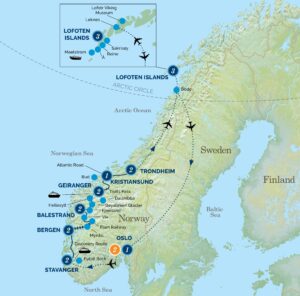Seals, often regarded as the playful jesters of the ocean, are far more than just charming marine mammals. These creatures, belonging to the pinniped family, exhibit an array of captivating traits and behaviors that can challenge our conventional perceptions. This listicle presents a collection of fun facts about seals that unveil their remarkable skills, intelligence, and unique adaptations to their aquatic environment. Dive in and explore the intriguing world of these ocean clowns!
1. Diverse Species with Distinct Traits
Seals encompass a variety of species, each with its own distinct characteristics. From the robust elephant seal to the nimble harbor seal, each species has adapted to its specific habitat. For instance, the leopard seal, known for its sleek physique and powerful jaws, preys upon penguins, while the cute and small harbor seal is commonly found along North America’s coastlines. This diversity in size, shape, and behavior illustrates the adaptability of seals to various marine ecosystems.
2. Highly Social Creatures
Seals display remarkable social dynamics, thriving in large groups known as colonies or pods. These social structures facilitate bonding among individuals and contribute to their collective survival. Communication plays a crucial role in their interactions; seals vocalize using a variety of sounds, including barks, grunts, and even melodious songs. Their vocalizations not only serve as a means of establishing social relationships but also assist in territory defense and mate attraction.
3. Acrobatic Performers of the Sea
To the delight of onlookers, seals engage in acrobatic displays that showcase their agility and strength. These mesmerizing flips, spins, and dives are more than mere entertainment; they serve practical purposes. Acrobatic behavior assists seals in escaping predators, navigating through their environment, and communicating with fellow seals. Some species, like the California sea lion, have even been observed performing tricks similar to those seen in marine shows, revealing their impressive learning capabilities.
4. Insatiable Curiosity and Intelligence
Seals are inherently curious creatures. Their inquisitive nature drives them to explore their surroundings, often approaching boats and divers. This curiosity is reflective of their intelligence, which rivals that of many terrestrial mammals. Research indicates that seals exhibit problem-solving skills and can learn through observation. Tests have shown that they can recognize patterns and even engage in playful interaction with humans, demonstrating a level of cognitive sophistication that continues to intrigue scientists.
5. Adaptations for Life in Cold Waters
Many seal species inhabit frigid waters, and nature has equipped them with remarkable adaptations to thrive in these harsh environments. One of their key adaptations is a thick layer of blubber that provides insulation against cold temperatures. Additionally, seals possess a unique circulatory system that helps conserve heat while allowing them to dive deep for extended periods. Their streamlined bodies and powerful flippers enable efficient swimming, making them adept hunters in icy seas.
6. Distinctive Feeding Strategies
Seals exhibit diverse feeding strategies tailored to their prey. For example, while harbor seals primarily consume fish, elephant seals are known to dive deep to pursue squid and other cephalopods. The Grey seal employs suction feeding, engulfing prey whole, while the Weddell seal utilizes its sharp wit to create breathing holes in frozen waters, allowing it access to prey beneath the ice. These varied feeding techniques illustrate their adaptability and resourcefulness in securing sustenance.
7. Unique Reproductive Behaviors
The reproductive strategies of seals are as varied as their species. Most seals give birth to a single pup, which they nurture with great care. The bond between mother and pup is crucial for survival, as pups rely on their mother’s milk, rich in fat, during their early weeks. Caution is also paramount; mothers often leave their pups hidden on land while they hunt. This strategy reduces the risk of predation, showcasing their instinctual understanding of their environment.
8. Conservation Status and Threats
Despite their fascinating characteristics, many seal populations face significant threats. Overfishing, habitat destruction, and climate change endanger their survival. Pollution and entanglement in fishing gear pose additional challenges. Conservation efforts are underway to safeguard their habitats and promote sustainable fishing practices. Understanding seals’ role in marine ecosystems is crucial for their protection, as they contribute to the overall health of oceanic environments.
9. Cultural Significance Across History
Seals have held cultural significance across various civilizations. Indigenous peoples of the Arctic have long relied on seals for sustenance, clothing, and tools. In mythology and folklore, seals often symbolize adaptability and intuition. Their playful nature has even inspired artistic expressions from literature to film, solidifying their place in human culture as enigmatic and endearing creatures of the sea.
10. The Ineffable Charm of Seals
Ultimately, the allure of seals lies in their combination of playful antics, remarkable intelligence, and significant ecological roles. Their vibrant personalities and striking adaptations invite admiration and curiosity. Observing seals in their natural habitat can instill a greater appreciation for marine life and the delicate balance of ocean ecosystems. By understanding these ocean clowns with surprising skills, we can foster a deeper connection to our planet’s biodiversity and advocate for the protection of these extraordinary marine mammals.
In conclusion, seals are not just playful ocean dwellers; they are complex creatures with a multitude of fascinating abilities. From their unique feeding strategies to their social intricacies, understanding seals opens a window into the wonders of marine life. Their capacity for intelligence and adaptation shifts our perspective, revealing that these seemingly simple animals are, in fact, vital players in the complex tapestry of ocean ecosystems.






